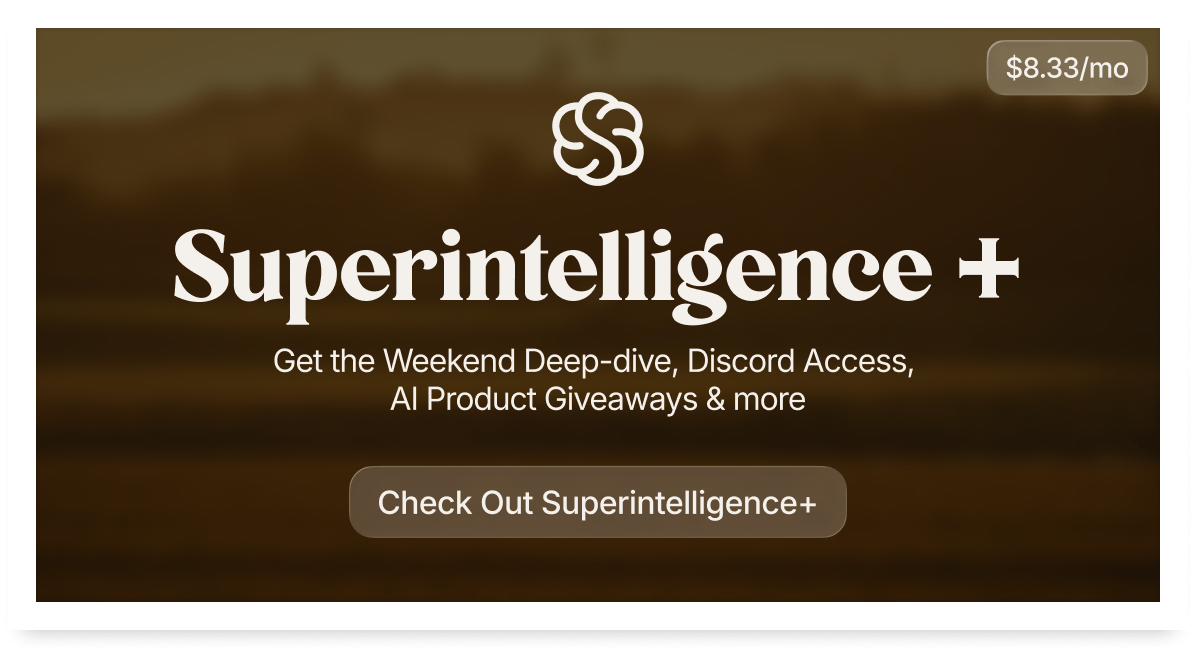
Dear Readers,
What if the next trillion-dollar shift isn’t about chips or models, but trust? As AI moves from marvel to infrastructure, OpenAI’s rumored ad plans, billion-dollar funding rounds, and the new moral panic around “superintelligence bans” all point in one direction: monetization is colliding with meaning. The age of AI neutrality might be ending; not with a warning, but with a business plan.
In Today’s Issue:
🗣️ OpenAI is considering ads in ChatGPT
💰 Global AI funding hit $73.1B in Q1 2025
🏦 Banks are transitioning from automation to agentic AI
🚨 Regulators are bracing for AI shockwaves
✨ And more AI goodness…
All the best,




SoftBank Fuels OpenAI’s Next Era
SoftBank just approved the remaining $22.5 billion of its massive $30 billion investment in OpenAI, finalizing a record $41 billion round that values the company at $260 billion pre-money. The funding will help cover OpenAI’s skyrocketing compute costs - projected at $16 billion this year and $40 billion next, as it moves toward a corporate restructuring and eventual public offering.

800 Leaders Demand AI Moratorium
Over 800 global figures, including Hinton, Bengio, and Steve Wozniak, demand a ban on superintelligent AI until safety rules exist. They warn of job loss and existential risk, though critics doubt it will slow Big Tech’s relentless race. However, this is highly unlikely, as the competition for the future is already a global battle for AI supremacy.

OpenAI Targets Google’s Music Edge
OpenAI is building a music-generation AI, working with Juilliard students to train models that can compose songs or add instruments to vocals, a direct challenge to Google’s Lyria and fast-growing startups Suno and Udio. Could this be OpenAI's next big hit?


Cursor is arguably the most successful AI editor. And now version 2.0 is just around the corner; the next big success?


Yann LeCun opened the MIT symposium in conversation with Mark Gorenberg. In the interview, LeCun reiterates that LLMs will not lead to AGI.


Ads in ChatGPT would be a major shift.
The Takeaway
👉 Expect a shift: OpenAI is actively exploring ad models for ChatGPT to support its cost structure and massive user base.
👉 Trust is on the line: Because chat-AI responses aren’t clearly separated from ads yet, preserving neutrality and clarity will be key.
👉 Design implications: If built, ads in ChatGPT could reshape how AI tools integrate with user data, attention and monetization.
👉 Strategic move for builders: AI developers and product teams should monitor how ad-insertions might affect UX, bias, regulatory risk and monetization paths.
Imagine opening ChatGPT and seeing a product suggestion or short ad slide into your conversation; sounds off script for an AI you trust, right? That’s exactly the turn OpenAI may be taking. The company’s CEO Sam Altman recently admitted that while no advertising product exists yet, ads in ChatGPT are “not off the table.”

Here’s the gist: ChatGPT’s “free user” base is massive, but running advanced AI at that scale costs billions each year. Estimates suggest OpenAI expects nearly $1 billion in ad-driven revenue by 2026, growing toward $25 billion by 2029. For the AI community, this is a flashpoint: how will the mix of utility, trust and commercialization behave when the assistant you use starts showing ads?

Why it matters: Ads could change how we perceive AI’s neutrality; will responses remain unbiased? Will user behavior or data feed directly into ad targeting? And for AI builders and researchers, this signals a business model shift where generative-AI platforms are migrating to the ad economy


The AI Insights Every Decision Maker Needs
You control budgets, manage pipelines, and make decisions, but you still have trouble keeping up with everything going on in AI. If that sounds like you, don’t worry, you’re not alone – and The Deep View is here to help.
This free, 5-minute-long daily newsletter covers everything you need to know about AI. The biggest developments, the most pressing issues, and how companies from Google and Meta to the hottest startups are using it to reshape their businesses… it’s all broken down for you each and every morning into easy-to-digest snippets.
If you want to up your AI knowledge and stay on the forefront of the industry, you can subscribe to The Deep View right here (it’s free!).



AI Startup Boom Raises Fears of a New Tech Bubble
Global AI funding hit $73.1 billion in Q1 2025, nearly 58% of all venture capital deployed that quarter! Valuations are climbing faster than fundamentals, and analysts warn of speculative excess. Yet the surge signals a structural shift: AI is no longer a niche; it’s becoming the core growth engine of capital markets. Investors face both immense upside and systemic risk as liquidity concentrates around a few dominant AI ecosystems.

Banks Move from Automation to Agentic AI
Financial institutions are transitioning from rule-based automation to “agentic AI”, autonomous agents that manage workflows, execute tasks, and make strategic recommendations. The shift could redefine cost structures, risk models, and competitive advantage.

Regulators brace for AI shockwaves
The Financial Stability Board and BIS warned that heavy concentration of AI infrastructure and models could amplify systemic risks through herd behavior. Regulators are preparing new frameworks to supervise AI use in banking and markets.







